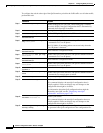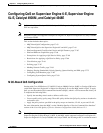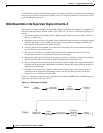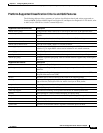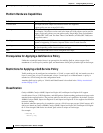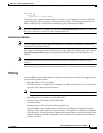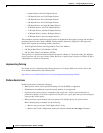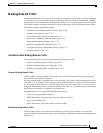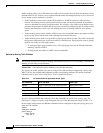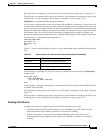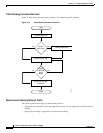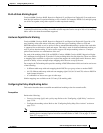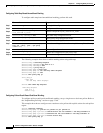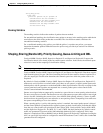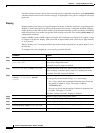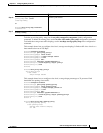
37-70
Software Configuration Guide—Release 15.0(2)SG
OL-23818-01
Chapter 37 Configuring Quality of Service
Configuring QoS on Supervisor Engine 6-E, Supervisor Engine 6L-E, Catalyst 4900M, and Catalyst 4948E
Traffic marking allows you to determine how traffic will be treated, based on how the attributes for the
network traffic are set. It allows you to segment network traffic into multiple priority levels or classes of
service based on those attributes, as follows:
• Traffic marking is often used to set the IP precedence or IP DSCP values for traffic entering a
network. Networking devices within your network can then use the newly marked IP precedence
values to determine how traffic should be treated. For example, voice traffic can be marked with a
particular IP precedence or DSCP and strict priority can then be configured to put all packets of that
marking into that queue. In this case, the marking was used to identify traffic for strict priority
queue.
• Traffic marking can be used to identify traffic for any class-based QoS feature (any feature available
in policy-map class configuration mode, although some restrictions exist).
• Traffic marking can be used to assign traffic to a QoS group within a switch. The switch can use the
QoS groups to determine how to prioritize traffic for transmission. The QoS group value is usually
used for one of the two following reasons:
–
To leverage a large range of traffic classes. The QoS group value has 64 different individual
markings, similar to DSCP.
–
If changing the Precedence or DSCP value is undesirable.
Methods for Marking Traffic Attributes
Note This section describes unconditional marking, which differs from policer-based marking. Unconditional
marking is based only on classification.
Method One—Unconditional explicit marking (using the set command)
You specify the traffic attribute you want to change with a set command configured in a policy map.
Table 37-6 lists the available set commands and the corresponding attribute. For details on the set
command, refer to the Catalyst 4500 Series Switch Command Reference.
If you are using individual set commands, those set commands are specified in a policy map. The
following is a sample of a policy map configured with one of the set commands listed in Table 37-6.
In this sample configuration, the set cos command has been configured in the policy map (policy1) to
mark the CoS attribute:
enable
configure terminal
policy map p1
class class1
set cos 3
end
Table 37-6 set Commands and Applicable Packet Types
set Commands Traffic Attribute Packet Type
set cos Layer 2 CoS value of the outgoing traffic Ethernet IPv4, IPv6
set dscp DSCP value in the ToS byte IPv4, IPv6
set precedence precedence value in the packet header IPv4, IPv6
set qos-group QoS group ID Ethernet, IPv4, IPv6



